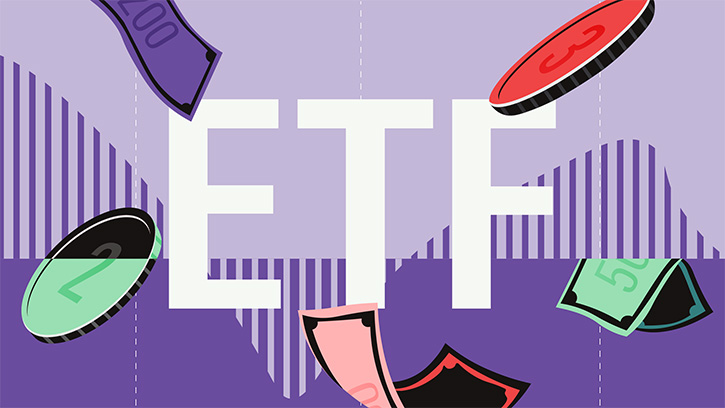The long-run performance of equities has been far superior to bonds. But there is no free lunch in the markets; that excess return from equities comes at a high cost in the form of gut-wrenching volatility, which can make investors turn their backs on stocks. The past decade taught many of us the painful lesson that we can't just buy equities at any price and expect to beat bonds--valuation matters. While it's impossible to time the market in the short run, valuation measures give us a decent way to calibrate return expectations over a decade or more. Looking at the U.S. market through the lens of price/earnings, dividend yields and our equity analysts' projections, we see a mixed bag. Equities aren't cheap, but they seem poised to offer a decent return.
According to data from Ibbotson Associates, now part of Morningstar Investment Management, the inflation equity-risk premium, which is the excess return on stocks over inflation, has averaged 6.7% per year over the last 85 years. That handily beat the 2.4% inflation-adjusted return of long-term bonds. A dollar invested in U.S. equities would have grown to an inflation-adjusted $243.85 compared with just $7.60 in U.S. bonds. The case for equities would be slam-dunk if it weren't for the extreme volatility. The 20.4% standard deviation of equity returns dwarfs the equity-risk premium, so returns can turn negative--as it did in 2008 when the S&P 500 lost 37%. The risk in equities is more than twice the risk of U.S. government bonds, so the possibility of large losses is much greater in equities. Even over periods as long as a decade or more, we cannot rule out the possibility of losses as investors who bought the S&P 500 in August of 2000 are currently still waiting for gains.
CAPE
How could investors have predicted that the last decade would have been so bad for equities? Well, they could have used a valuation perspective. Stocks in August 2000 were wildly overvalued as pointed out by a number of market observers and in several publications, including Irrational Exuberance by Yale professor Robert Shiller. That book popularised the cyclically adjusted price/earnings ratio, CAPE or PE10, valuation measure for equities, which is based on 10-year average earnings. CAPE hit an all-time high of 44 times in 1999. The subsequent decade was one of the worst for equities in living memory. At least in hindsight, it is clear that equities were in a bubble. Earnings have now had more than 10 years to catch up to those lofty valuations. In the meantime, whipsawing equity markets and elevated volatility may have soured many investors from holding equities. Over the past three years, fund flows into U.S. equities have been negative, while both bonds and commodities have positive flows. This has less to do with valuation and more to do with risk-aversion and the perceived safety of those asset classes relative to equities. While the current CAPE of about 20.5 is well below the high of 44 times hit during the bubble, it is still above the long-term average of about 16. So, by this measure, equities do not look particularly cheap, but they don't foretell of a fleecing either.
Using 10 years of earnings data helps smooth the effects of the business cycle and mute the impact of unusually high or low earnings. But there is nothing magical about using 10 years of earnings and the most recent decade includes two deep recessions in which earnings declines were unusually severe. If we remove the effect of the first recession by using seven years instead of 10, the long-term CAPE is still about 16 but the current CAPE drops to 18.5, making the markets appear more attractive, but still overvalued. But even that may not go far enough to smooth out the effects of the recent earnings declines. Peak-to-trough earnings during the recent recession declined by a whopping 92%, a much more severe decline than ever before experienced, even more severe than during the 1929 market crash when earnings declined by 67%. That severe drop results from using as reported earnings, including write-downs of an unprecedented magnitude. While analyst estimates of operating earnings are notoriously optimistic, using the current estimate of about $113 for the S&P 500 results in a price/earnings ratio of about 10.5 times.
Dividend Yield
The current 2.2% dividend yield on the S&P 500 may not sound very promising in absolute terms but that yield is about the same as the yield on the 10-year Treasury bond. The difference between the dividend yield on stocks and the yield on bonds, known as the "yield gap," can be used as an indicator of the attractiveness of equities relative to bonds. While the yield gap was slightly more attractive in March 2009 during the financial crisis, equities are at their most attractive point since 1958. Buying equities at that point paid off, as they returned an inflation-adjusted 8% per year over the next 10 years compared with less than 2% for bonds.
The current dividend yield understates the attractiveness of equities as companies have moved away from using dividends and opted instead to hold cash or implement share buybacks. Between 1950 and 1990, the dividend payout ratio averaged about 53%, but since 1990, it has dropped to about 41%. In an efficient market, investors should be indifferent between dividends and share buybacks; as long as managers reinvest those earnings at attractive rates, the share price will increase, so the loss in dividend income will be offset by capital gains. Managers used to be able to argue that the higher tax rate on dividends gave them an incentive to use buybacks because capital gains were taxed at a lower rate. With the tax rates for dividends and buybacks now the same, managers still have the incentive to use buybacks because dividends erode the value of management stock options.
All else equal, a lower payout and a high retention rate should allow earnings to grow at a faster rate. Between 1950 and 1990, while GDP grew by about 3.4%, real earnings grew by about 1.5%. But since 1990, as the payout rate fell and GDP growth fell to 2.8%, earnings growth accelerated to about 3.5%. The S&P 500 currently trades around 1,150, but there is about $290 per share in cash, compared with about $100 per share 10 years ago. More cash on the balance sheet and faster earnings growth should justify a higher valuation. However, we should not expect earnings growth to continue to grow faster than the economy. Part of that growth over the past 20 years was fuelled by an unsustainable increase in leverage by individuals, firms, and governments. Excess cash on balance sheets could also be a sign of a lack in profitable investment opportunities, particularly in this world of low returns on capital. Viewed in this light, we would want to avoid firms with high valuations that may not be able to deliver on expectations for rapid growth.
Morningstar Fair Value
While the price/earnings ratio provides a decent guidepost of market valuation, it is an oversimplification to value the entire market based on past earnings or an estimate of one-year forward earnings. In theory, an equity's price represents the discounted value of all future cash flows. At Morningstar, we are fortunate to have over 100 equity and credit analysts who build discounted cash flow models on all of the stocks they cover. Premium users can see the fair value estimates for the U.S. and European equities we cover by reading our Stock Analyses.
This data also allows us to aggregate all of the fair value estimates to gauge the attractiveness of the U.S. market. We can see that the S&P 500 currently trades at a price/fair value of 0.82. While not as attractive a level as it reached during the financial crisis, we would characterise this level as undervalued. Additionally, large-cap and value stocks appear more attractive than small-cap and growth stocks.























